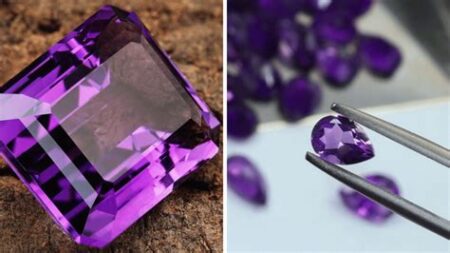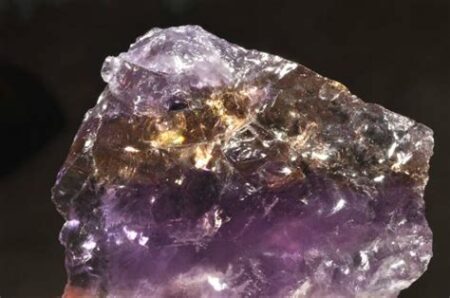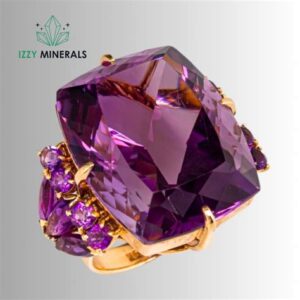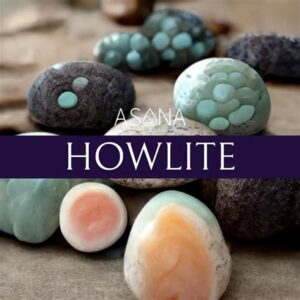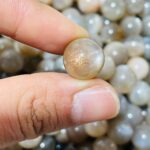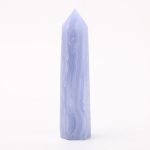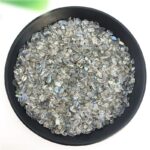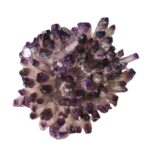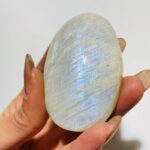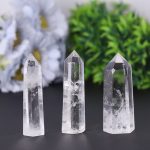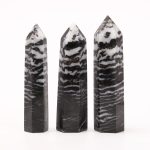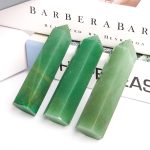Introduction
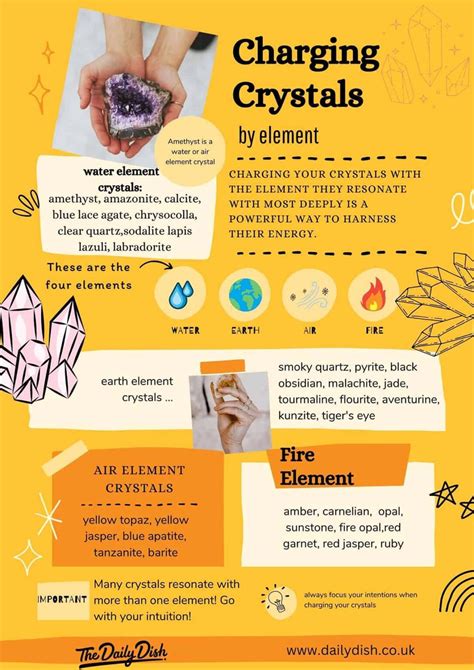
Chrysocolla, a captivating gemstone renowned for its vibrant blue-green hue, has enthralled civilizations for centuries. Beyond its aesthetic allure, chrysocolla possesses a rich array of properties that have made it an enduring symbol of healing, communication, and spiritual growth. This comprehensive guide delves into the multifaceted properties of chrysocolla, exploring its geological origins, chemical composition, health benefits, and applications in various fields.
Geological Origins and Chemical Composition
Chrysocolla is a secondary mineral formed through the hydrothermal alteration of copper-bearing rocks. It is primarily composed of copper silicate hydrate, with varying amounts of impurities such as aluminum, iron, and manganese. This unique chemical composition bestows upon chrysocolla its distinctive blue-green color and other remarkable properties.
Physical Characteristics
Chrysocolla exhibits the following physical characteristics:
- Color: Blue-green to turquoise
- Hardness: 2-4 on the Mohs scale
- Fracture: Conchoidal
- Luster: Vitreous to earthy
- Streak: Blue-green
Health Benefits
Chrysocolla has gained recognition for its purported health benefits. Studies have shown that it may:
- Reduce Inflammation: Chrysocolla is believed to possess anti-inflammatory properties, making it potentially beneficial for conditions such as arthritis and pain.
- Improve Communication: It is said to enhance communication skills and promote clear expression.
- Support Emotional Healing: Chrysocolla is thought to soothe emotional wounds and foster a sense of peace and well-being.
Applications
The versatility of chrysocolla extends beyond its gemstone use. It has found applications in various industries, including:
1) Jewelry: Chrysocolla is a popular gemstone for jewelry making, lending its vibrant blue-green hues to rings, necklaces, and earrings.
2) Interior Design: Chrysocolla slabs and tiles are used as decorative elements in homes and commercial buildings, adding a touch of serenity and sophistication.
3) Paintings: Chrysocolla powder has been incorporated into paints for centuries, creating captivating blue-green pigments.
4) Vitreous Enameling: Chrysocolla is used as a flux and coloring agent in vitreous enameling, creating vibrant and durable glass-like surfaces.
Motivations for Using Chrysocolla
People are motivated to use chrysocolla for several reasons, including:
- Pain Relief: Its purported anti-inflammatory properties attract those seeking relief from discomfort.
- Communication Enhancement: Individuals seeking to improve their communication skills may turn to chrysocolla for support.
- Emotional Healing: Those navigating emotional challenges may find solace in the soothing and calming properties of chrysocolla.
Pain Points and Challenges
- Availability: Chrysocolla can be challenging to source in large quantities, leading to a limited supply in the market.
- Durability: As a relatively soft mineral, chrysocolla requires careful handling and protection from scratches or damage.
- Variability in Quality: The quality and color of chrysocolla can vary significantly, making it difficult to find uniform pieces for certain applications.
FAQs on Chrysocolla Properties
- What is chrysocolla good for? Chrysocolla is believed to have anti-inflammatory, communication-enhancing, and emotionally healing properties.
- What color is chrysocolla? Chrysocolla is typically blue-green to turquoise in color.
- How hard is chrysocolla? Chrysocolla has a hardness of 2-4 on the Mohs scale, making it relatively soft.
- Where is chrysocolla found? Chrysocolla is primarily found in copper-bearing rocks around the world.
- Can chrysocolla be used in jewelry? Yes, chrysocolla is a popular gemstone used in jewelry making.
- What are the benefits of using chrysocolla for communication? Chrysocolla is said to enhance communication skills, promote clear expression, and facilitate understanding.
- How does chrysocolla support emotional healing? Chrysocolla is believed to soothe emotional wounds, bring peace, and foster a sense of well-being.
- Is chrysocolla safe to use? Chrysocolla is generally considered safe for use, although it should not be ingested.
Conclusion
Chrysocolla is a multifaceted mineral with a rich history and a wide range of properties. Its vibrant blue-green hue, coupled with its reputed health benefits and versatility in applications, makes it a compelling choice for those seeking natural remedies, creative expression, and spiritual growth. As research continues to shed light on the potential of chrysocolla, its use is likely to expand in the years to come.
Table 1: Geological Properties of Chrysocolla
| Property | Value |
|---|---|
| Origin | Hydrothermal alteration of copper-bearing rocks |
| Chemical Composition | Copper silicate hydrate (CuSiO3·2H2O) |
| Color | Blue-green to turquoise |
| Hardness | 2-4 on the Mohs scale |
| Fracture | Conchoidal |
| Luster | Vitreous to earthy |
| Streak | Blue-green |
Table 2: Health Benefits of Chrysocolla
| Benefit | Potential Use |
|---|---|
| Anti-inflammatory | Pain relief, arthritis |
| Enhanced Communication | Improved communication skills, clear expression |
| Emotional Healing | Soothing emotional wounds, peace, well-being |
Table 3: Applications of Chrysocolla
| Application | Description |
|---|---|
| Jewelry | Rings, necklaces, earrings |
| Interior Design | Slabs, tiles for decorative elements |
| Paintings | Blue-green pigments |
| Vitreous Enameling | Flux and coloring agent |
Table 4: FAQs on Chrysocolla Properties
| Question | Answer |
|---|---|
| What is chrysocolla good for? | Anti-inflammatory, communication-enhancing, emotionally healing properties |
| What color is chrysocolla? | Blue-green to turquoise |
| How hard is chrysocolla? | 2-4 on the Mohs scale |
| Can chrysocolla be used in jewelry? | Yes, a popular gemstone for jewelry making |
| What are the benefits of using chrysocolla for communication? | Enhances communication skills, promotes clear expression |

